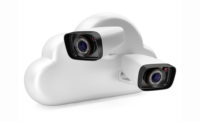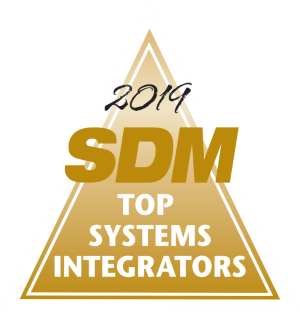WHENEVER A SECURITY DEALER OR INTEGRATOR can add value to a traditional security system through a service, there is an opportunity to offer it as a chargeable service to generate recurring monthly revenue (RMR). One such offering is interactive services, a suite of functions that enables customers to manage the security in their environments, usually from an app.
Interactive services encourage end users to interact more frequently with their systems and to realize more benefits than from a traditional system. This, in turn, lets them appreciate the value of their security systems more easily and ideally creates a “stickiness” between the customer and the security dealer. The security industry claims that this creates longer term customer retention.
“We find very consistently that when you don’t provide these kinds of high value or high touch services that the [customer] attrition rates are fairly high,” says Nate Natale, senior vice president of North American sales and channel development, Alarm.com, Vienna, Va. “When you get a customer more involved, there’s no doubt that the survival rate of that customer is huge.”

Consumers want video security, but they want accurate detection — making analytics an important advancement in the realm of interactive services for DFW Security.
IMAGE COURTESY OF DFW SECURITY
The ultimate goal of interactive services is to connect technology to people’s lives, says Dave Mayne, vice president of product management, Alula, St. Paul, Minn. “We want to provide the tools for that to happen for our dealers and for our partners. My view is if it’s just straight security, that’s great, but if you can add a thermostat, you’re going to have a better customer. If you can add a camera, you’re going to have a better customer. All of this leads to profits.
“Our view is the more services and the more devices that become part of the home and part of what the dealer is offering, the more value that system is going to bring and the more use they get out of it. You want to have two, or three, or four major devices that become part of this ecosystem,” Mayne describes.
Demand for security and connected homes has been increasing due to a general sense of uncertainty, Mayne believes. People are also spending more time at their homes, whether because of working from home or lockdowns, or both. “They’re starting to assess what’s going on in their home. And all of these things seem to be driving increased demand,” Mayne says.
Remote connection to an end user’s system enables a security dealer or integrator to offer interactive services. For Bosch Security Systems, through the Bosch Remote Portal, these services can include access to live video streams, alarm management, event-based recording stored in the cloud, counter reports and more, says Paul Garms, director of regional marketing, video systems, Bosch Security Systems LLC, Fairport, N.Y.
But interactive services have an extended benefit, too. “The ability to monitor and service systems remotely enables the dealer and integrator to keep systems operating smoothly even at sites with restricted access due to the pandemic,” Garms says. “This capability also lowers their costs by eliminating the need for truck rolls for service.”
So, in addition to having interactive services provide all the customer benefits, “If our industry is going to remain competitive, they have to have the tools to remotely manage, monitor and service and support those devices from their office so that it’s quality service all the time for the consumer,” Mayne says.
Security professionals say that if you’re not currently offering interactive services, you should start. If you already sell them, consider some of the following ideas to increase your RMR through additional products and connections.
Revenue-Generating Idea 1: Video
Mayne says he sees traction in video, particularly outdoors, where residential end users tend to add an average of 2.7 cameras per account. “We’re visual beings; everybody likes to be able to tie video into this security and life safety world. Until the past five years, it was rare that you’d have video that was really folded down into the residential or consumer level. Now, it’s becoming commonplace,” Mayne says. “The importance there is when you have video, people tend to use their system more. If they use their system more, they’re going to pay recurring revenue for a longer period of time and they’re going to get more value out of it.”
Outdoor video cameras can be layered with outdoor security sensors, such as outdoor door/window sensors, outdoor motion detectors and outdoor sirens, for comprehensive perimeter protection, Mayne says. “This is all about helping to get your customers to use the interactive services as frequently as possible because that’s going to be a high quality customer for a long time,” he says.
Mayne acknowledges there are some challenges to bringing video to the mass market and having it be profitable, due to the cost of cameras and other network-connected video supportive devices. However, “In terms of keeping consumers engaged and paying for services for a long period of time, video is one that just jumps out because as soon as you get notifications of somebody on your front step, as soon as you get notifications of packages being delivered, etc., it becomes a service that people just struggle to turn off,” Mayne says.
In tandem with video monitoring services, dealers and integrators can offer video verification of alarms on the users’ property for faster response from local authorities, notes Bosch’s Garms. The monitoring center can also offer live intervention and other interactive services, helping to reduce the risk of damage to the property. “This is a powerful deterrent that brings added value to the system,” Garms says.
In addition to video verification, with or without live intervention, other services include virtual assistant, in which an operator provides remote assistance to a person in distress at the push of an emergency button; and virtual guard tours, when an operator performs remote checks of all key areas at a customer’s premises, Garms describes.

Video doorbells such as this one from Alula is one of two interactive services that “pop right to the top” in terms of adding value, reducing attrition and increasing RMR for dealers, according to the company.
IMAGE COURTESY OF ALULA
Revenue-Generating Idea 2: Analytics
Analytics technology has a unique role to play in a residential user’s interactive security services. It serves to filter out nuisance alarms so the only alarms received are those valuable enough to pay attention to.
For example, the analytics solution at Alarm.com, called Insights Engine, allows notifications only when something out of the ordinary happens at an end user’s home or business. “Those kinds of notifications are super useful to the end user,” Natale says. “It’s things that they don’t expect when they first get a system, but really love once they have it.”
For example, if a resident were to be notified through their interactive services every time someone passed their driveway, it would be an annoyance, Natale explains. But if they received notifications only when somebody is in a certain area of the driveway, or if it’s a person and not a dog or a car — and at a specific time — that ends up being valuable information. Alarm.com has video analytics on all of the company’s new cameras, as well on its newest doorbell camera. Natale says some of Alarm.com’s largest dealers have standardized on video analytics on 100 percent of every application.
Guy Page, chief sales and marketing officer at DFW Security, Fort Worth, Texas, an Alarm.com dealer, says that when Alarm.com came out with its video analytics a few years ago, it was the answer to what DFW Security had been looking for. “[Until then] we would talk you out of video,” Page says. “Prior to that, if you were getting a notification from your video system, you were getting squirrels, rats, cats, dogs, wind blowing trees, shadows moving across, cars driving by. You were getting all that. The sweet thing about the video analytics is it really allows you to filter out everything except what you want to see.”
DFW Security uses radio advertisements with endorsing talk show hosts who have been outfitted with interactive security systems in their own homes. (Click here to listen.) They read from a script but sometimes also discuss their own personal experiences using the video cameras with analytics and the home automation products. Page says the radio ads have had a very high success rate because consumers want video security, but they want accurate detection.
Approximately 90 percent of every DFW Security sale is by phone. Page says 80 percent of each sale includes at least one device, and at least 60 percent of all sales include four cameras or more. “Ultimately, it’s helped us be able to increase the RMR; and [adding] consumer financing has actually been able to increase the dollars that we get up front,” Page says. “We’re adding 200 or so new customers in the winter and another 300 in the summer, every month. It allows you to get more recurring revenue and also to collect money up front, and then the consumer financing, it even makes it easier.”
Security company Mark Electronics no longer installs residential camera systems with a DVR or NVR on-site to do the recording. “And I would highly suggest that anyone else who’s in the camera business doesn’t do it either because the analytics in the cloud storage and the revenue generation from that is huge,” says Matt Meehan, executive vice president, Mark Electronics Inc., Rochester Hills, Mich. “Now every camera that gets installed has analytics and it has a number attached to it that increases the amount of revenue [our] company is making.”
Revenue-Generating Idea 3: Video Doorbells, Thermostats & Environmental Monitoring
Mayne says that while Ring made the doorbell camera exciting for consumers, Nest made the thermostat exciting for consumers. Those are two services that “pop right to the top” in terms of adding value, reducing attrition and increasing RMR for dealers, he relates.
It is estimated that about 16 percent of all U.S. homes have a video doorbell, and sales keep climbing. While they do, these products continue to be enhanced.
One new feature, introduced by Alarm.com, is a video doorbell equipped with analytics, which also has a touchless feature. It works with a mat that reads, “Stand here to ring the bell,” and a cover that goes over the doorbell so users don’t actually need to touch it to get it to automatically ring.
On a macro level, energy awareness is top-of-mind among many people. “Thermostats are nicely tied to a security system because nobody wants to program a thermostat. They’re complicated to program, but when it’s tied to a security system, you don’t need to program it,” Mayne says. “The security system knows when you’re away and when you’re home. And if your schedule changes … your HVAC or your energy usage can change based on when you’re home and when you’re away.
He also notes an uptick in leak monitoring and indoor temperature monitoring, citing the big freeze in Texas and the South in February, which caused a large number of pipes to freeze and crack. Additionally, monitoring temperature with interactive services can show people if their air conditioning fails (useful to know if pets are at home).
Air quality is also becoming a point of concern. New homes are more energy efficient, but have less airflow. “With that can come the risk of mold and radon and other air quality issues that can arise,” Mayne shares.

Telguard’s HomeControl Flex is an economical solution for connecting to virtually any alarm panel in order to provide interactive services.
IMAGE COURTESY OF TELGUARD
Revenue-Generating Idea 4: Connected Car
A relatively new offering to the connected home space is Alarm.com’s connected car. It has vehicle security elements, as well as driver safety elements. “It ties right in with the security offering and it connects everything through a single app,” Natale says.
If the homeowner has a teen driver, for example, you can set a threshold for getting a notification when the car goes beyond 65 miles an hour, or for sudden accelerations or hard braking. It identifies the location of the vehicle, which can be useful if the car was towed. It also provides status alerts, such as fuel level and any maintenance issues.
The interactive service also willfully engages things like precise geo-services. “If you wanted to have your garage lights come on, for instance, as you enter your block, with having this device in the car it’s much more accurate than just general geo-services that are typically docked to a phone. There’s a lot more integration,” Natale says.
Revenue-Generating Idea 5: Add Interactive Services When You Update the Cellular Communicator
The sunsetting of 3G/CDMA technologies makes this the perfect time for dealers to increase their revenue with interactive services, says George Brody, president, Telguard, Atlanta, alarm communication and interactive services specialists. Equipment must be upgraded to operate on the LTE cellular networks, so it is an excellent opportunity to add on interactive services with the new cellular communicators, Brody says, adding that Telguard’s HomeControl Flex can be easily connected to virtually any alarm panel, no matter the manufacturer or original installation date.
“Adding interactive services to an installed system for an existing customer is a very economical and easy path to increasing revenue while also adding value and convenience to a customer’s system,” Brody says.
“HomeControl Flex generates additional recurring monthly revenue while providing an economical remote service offering for end users. [It] allows homeowners to remotely control their existing security panel from their smart phones, computer or tablet including arming and disarming, activity, history as well as integration with Alexa and Arlo cameras.”
The more products a customer adds onto their interactive system, the greater the dealer’s recurring monthly revenue, because in addition to the installed price of the product, they can charge a monthly price for managing that product.
“You see how it’s really easy to get to an account that started off in the $30s and end up somewhere in the mid-$60s, and the customer has everything that they want,” Meehan says. “And the dealer is in control of all of those interactive services, including the cameras, the door locks, the thermostats. All of it’s under one roof being serviced by a single dealer, a single point of contact — and it all works.”








